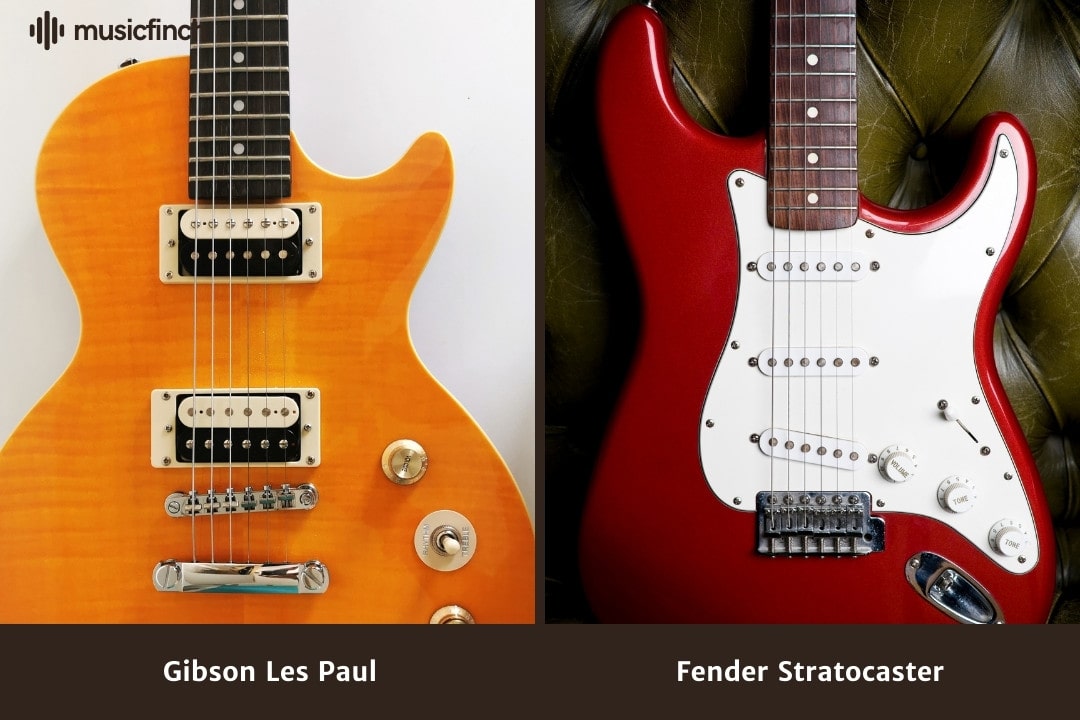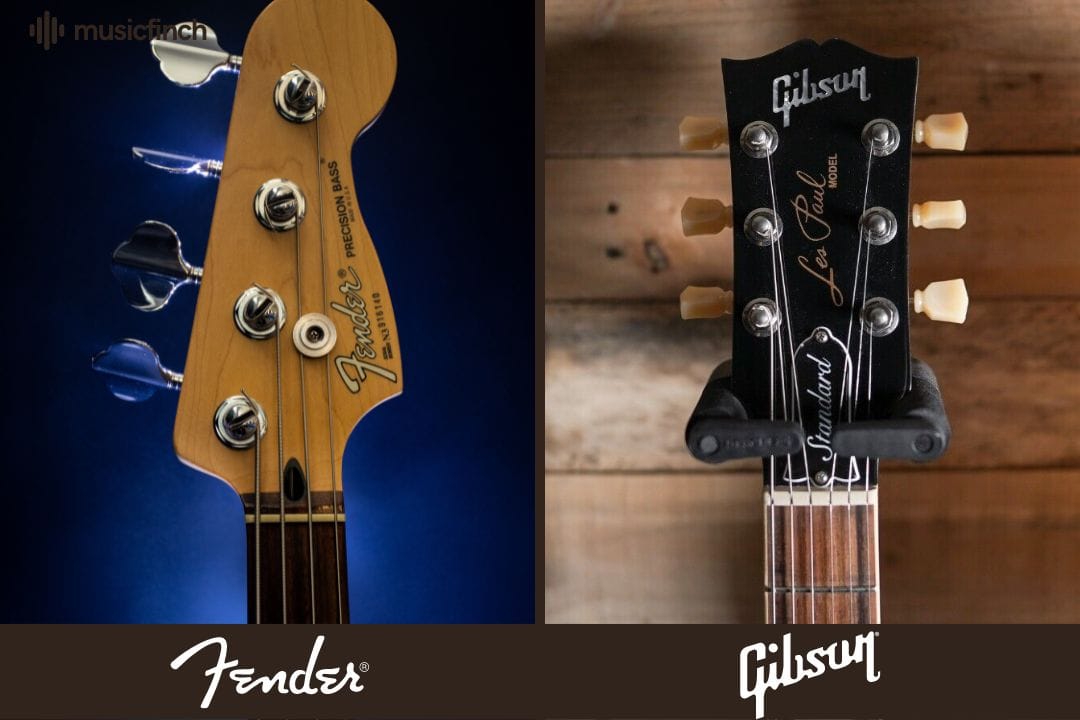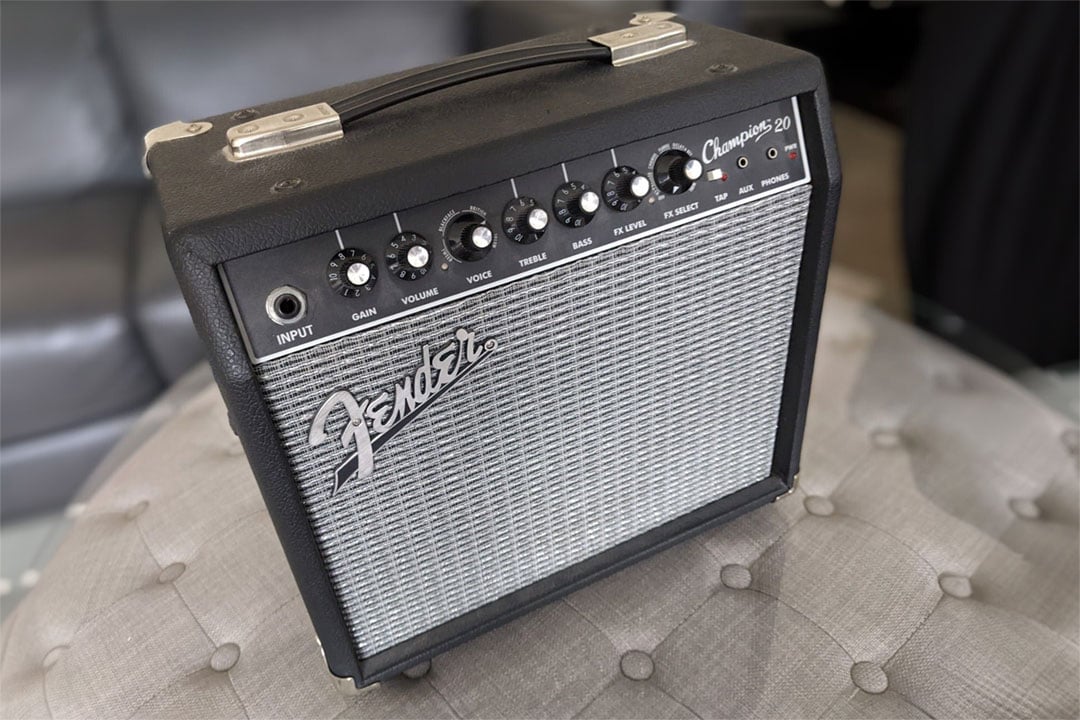Most electric guitar descriptions or sketches will likely resemble a Gibson Les Paul or a Fender Stratocaster.
And for good reason: since their release in the 1950s, these two models have captivated the guitar community with their unique features, including their revolutionary playability and sonic performance improvements.
Each has a distinct design and tone, creating a diverse playing experience.
| Feature | Gibson Les Paul | Fender Stratocaster |
|---|---|---|
| Scale Length | 24.75 inches | 25.5 inches |
| Sound Characteristics | Rounder, warmer sound | Bright, chime-like sound |
| Pickup Configuration | Two humbucker pickups (neck and bridge) | Three single-coil pickups (neck, middle, and slanted bridge) |
| Tone Quality | Thicker, deeper sound; suitable for hard rock, metal, blues, jazz | Brighter, crisper sound; prone to electrical interference |
| Design and Aesthetics | One cutaway | Two asymmetrical cutaways |
| Neck Design | Wider span, heftier; preferred for note bending | Thinner, more comfortable for smaller hands |
| Bridge System | Tune-o-matic fixed bridge and stop bar tailpiece | One-piece tailpiece/tremolo bridge with individually adjustable string saddles |
| Tuning Stability | Praised for its tuning stability | Solid-body of ash, alder, or poplar |
| Body Material | Solid mahogany body with a thick maple top | Solid body of ash, alder, or poplar |
| Neck Attachment | Set-in neck | Bolt-on neck |
| Tone Sustain | Greater sustain | Sharper, brighter tone with less sustain |
| Playability Comfort | Shorter scale, heavier body | Longer scale, lighter body, double-cutaway design for comfort |
Scale Length and its Impact

One major difference between the Fender Stratocaster and the Gibson Les Paul is the guitar scale length—the distance from the nut to the bridge.
The Gibson Les Paul’s scale length is 24.75 inches, while the Stratocaster measures a slightly lengthier 25.5 inches.
The impact of this difference on sound and playability is profound. The Stratocaster’s longer scale offers more space between the frets, and its strings tend to have greater tension; small-handed individuals might find it more challenging to play.
Notably, this tension results in a bright, chime-like sound. On the other hand, Les Paul’s shorter scale promotes a rounder, warmer sound.
Pickup Configurations

The Stratocaster and the Les Paul are available with a broad range of pickup arrays and switching options, yet their classic pickup configurations contribute to their distinct sound profiles.
- The Stratocaster traditionally sports three single-coil pickups—neck, middle, and bridge (the last pickup is slanted; see my article about why)—resulting in a brighter, crisper sound but potentially unwanted electrical interference.
- Conversely, the Les Paul features two humbucker pickups—neck and bridge—which produce a thicker, deeper sound, suitable for hard rock, metal, blues, or jazz.
Despite their presets, both are versatile instruments limited only by the musician’s imagination.
Design and Aesthetic Elements

The Stratocaster has two asymmetrical cutaways for visually appealing aesthetics and better access to the high notes.
The Les Paul has one cutaway, providing similar fretboard access.
Neck Design

Another significant distinction between the Stratocaster and the Les Paul is the neck design.
A thinner Stratocaster neck can be more comfortable for players with smaller hands, while others prefer the heftiness and wider span of Les Paul’s neck, which helps with note bending. The neck’s design also influences the tone: the Les Paul’s set neck, coupled with its humbucking pickups, leads to a warmer tone and greater sustain.
Bridge System

- Vintage Meets Modern: Combines the iconic early 60s style with functional, time-tested modifications.
- Signature Sound: Equipped with 60s Burstbucker zebra open-coil pickups, offering that classic Gibson tone with an extra punch.
- Quality Craftsmanship: Mahogany back and maple top for that unmistakable Les Paul sound and durability.
The bridge system plays a role in both sound quality and the ease of play.
The Stratocaster usually boasts a one-piece tailpiece/tremolo bridge with individually adjustable string saddles for easy setup and intonation of strings.
However, overuse of the tremolo can lead to tuning issues.
Meanwhile, the Les Paul is equipped with Gibson’s tune-o-matic fixed bridge and “stop bar” tailpiece, which is praised for its tuning stability.
In My Opinion

- Authentic tone and feel from alder body and maple neck.
- Fender-designed pickups produce bell-like chime
- Comfortable, modern C-shaped neck profile
- 9.5″ fretboard radius for ease of play
From personal experience, both the Gibson Les Paul and the Fender Stratocaster offer awe-inspiring unique forms and functions.
Spending countless hours playing these great instruments has given me a deep appreciation for their distinct characteristics and how they shape the musical experience.
With its shorter scale length and heavier body, the Gibson Les Paul has always brought me a sense of solidity and confidence, especially when performing blues or rock genres.
The rich, warm tones that resonate from its humbucking pickups have an unmistakable depth and thickness almost magical when cranked up, adding raw power to powerful chord progressions and smoothness to soulful solos.
The Fender Stratocaster, on the other hand, offers a different but equally remarkable experience.
As a player with smaller hands, I’ve always found the Stratocaster’s neck design and increased space between the frets surprisingly comfortable.
Moreover, the strat’s precise, crystalline sound—accentuated by its trio of single-coil pickups—is a reward when playing anything from country to pop, offering clarity and chime that cut beautifully through any mix.
One crucial lesson I’ve garnered from playing both types is that choosing between a Les Paul or a Stratocaster isn’t a matter of superiority but, more pertinently, a matter of personal preference and the kind of tonal ambiance you aim to create.
No guitar can inherently be ‘better’ than the other—so long as the instrument sparks creativity and brings joy, it’s the perfect tool for the job.
Related Questions
What are the key differences in the body designs of the Gibson Les Paul and the Fender Stratocaster?
The Gibson Les Paul typically has a solid mahogany body with a thick maple top, producing a dense, rich, sustain-laden tone. It also has a set-in neck, which contributes to greater sustain.
On the contrary, the Fender Stratocaster usually features a solid body of ash, alder, or poplar. Its bolt-on neck design offers a sharper and brighter tone with less sustain.
How do the pickup configurations of the Gibson Les Paul and the Fender Stratocaster influence their respective sounds?
The Gibson Les Paul commonly comes with two humbucker pickups, which are known to eliminate the hum that can accompany single-coil pickups.
They provide a warmer, thicker tone — perfect for rock, blues, and jazz genres.
On the other hand, the Fender Stratocaster typically has three single-coil pickups, which result in a crisper and brighter sound with more distinct note separation, ideal for blues, country, and surf music.
How do the Gibson Les Paul and Fender Stratocaster differ in playability and comfort?
The Gibson Les Paul has a shorter scale of 24.75 inches, meaning the strings require less tension to reach the concert pitch.
This feature makes the Les Paul a bit easier to bend strings on, which is why many blues and rock players prefer it. The guitar also has more mass, which can make it feel heavier. Conversely, the Fender Stratocaster has a longer 25.5-inch scale length, resulting in tighter string tension.
The contours of its double-cutaway body design make it a bit more comfortable to hold, and it is often lighter due to the body wood and body construction.
The extended upper range provided by the double-cutaway design is another reason players looking for a more comfortable design sometimes prefer the Stratocaster.




